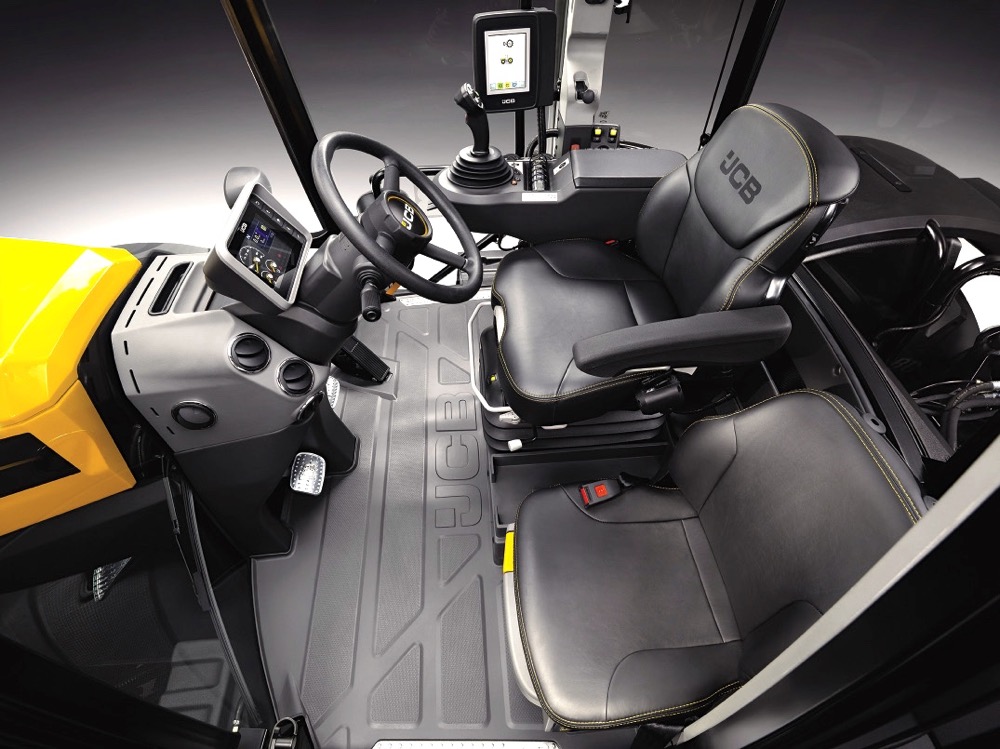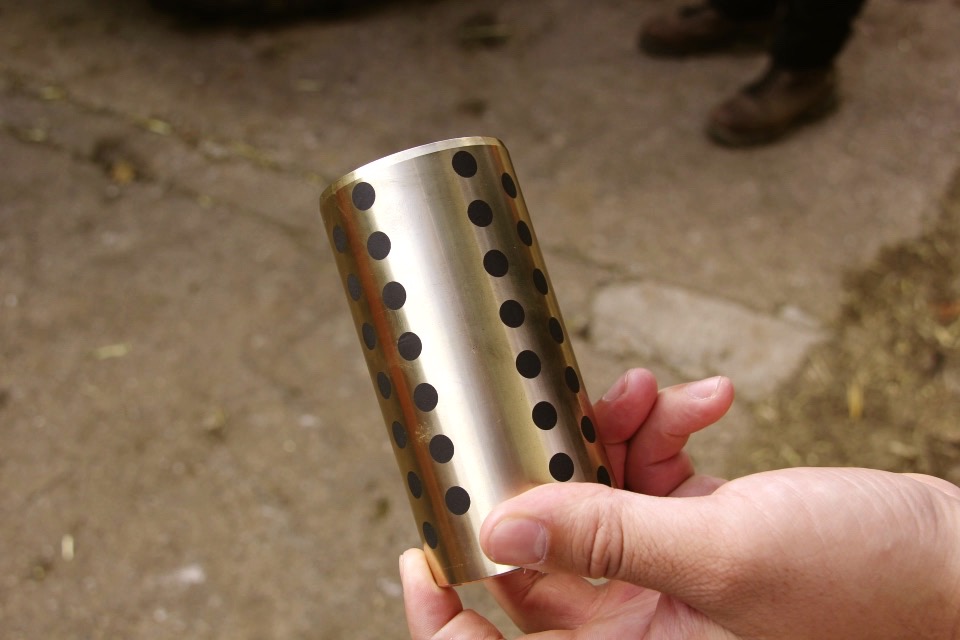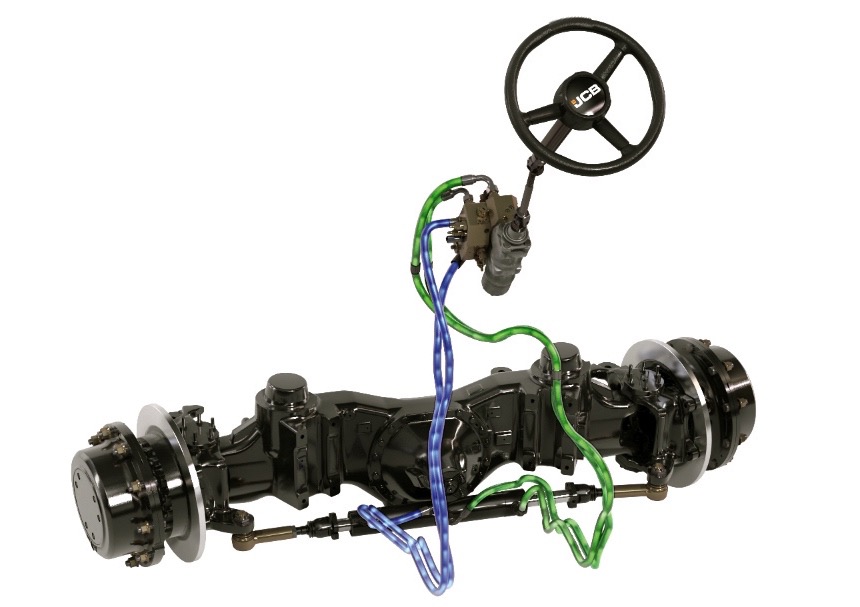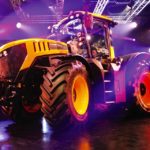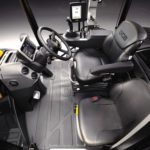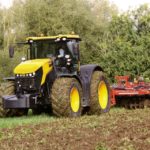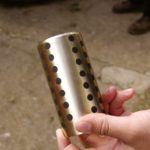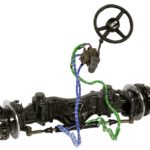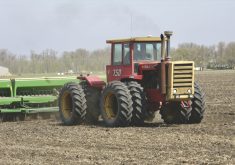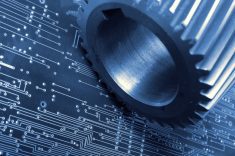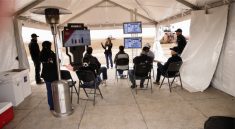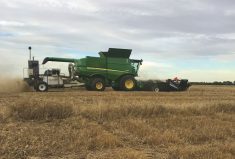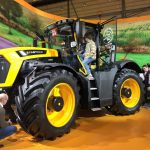
MG Fastrac 1_opt
Unveiled at JCB world headquarters in Rocester, England, the new 8000 Series Fastracs return to typical Fastrac (nearly) equal-wheeled configuration.
Photo: Scott Garvey
Interior_opt
The new 8000 Series tractors get the same cab that was introduced two years ago on the smaller 4000s.
Photo: JCB
MG Fastrac 2_opt
The new 8000 Series offers higher horsepower ratings and features to improve in-field performance.
Photo: Scott Garvey
Bearing_opt
New bronze-graphite bearings on the telescopic arm of the TM320 are designed for longer life.
Photo: Scott Garvey
fastrac-steering
A new dual-system hydrostatic steering system provides adjustable sensitivity and a failsafe feature to make high-speed road travel safer.
Photo: JCB
All eyes were on a stage in JCB’s Rocester, England world headquarters building in October as a few dozen ag journalists from several different countries gathered for the reveal of the company’s all new 8000 Series Fastrac tractor. As is usually the case with events like this, no matter what the brand, the unveiling was accompanied by flashing lights, loud music, and speeches from proud executives.
Back in 1991, U.K.-based JCB ventured out of the light construction equipment sector it was familiar with and into the crowded ag tractor market, but not with a me-too design. Instead, it went to market with a novel machine that could head out into a field and perform like a regular tractor, but could also haul loads and travel down the road almost as fast as a truck.
Read Also
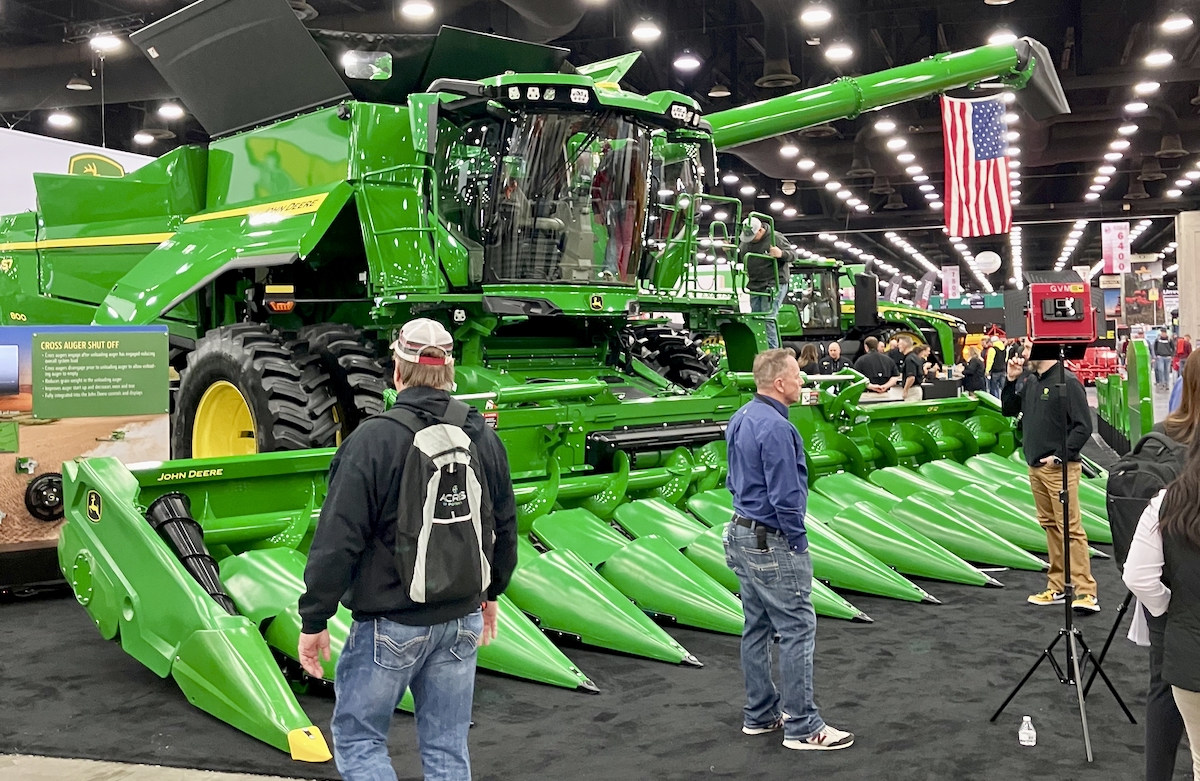
The pros and cons of new technologies
New farm technology hitting the marketplace can be awfully enticing, and it’s not been unheard of in years gone by…
It was the birth of the Fastrac.
Now, 25 years later, JCB has totally redesigned its flagship 8000 Series models.
About two years ago, the company also retooled its smaller 4000 Series tractors, giving them, among other things, a new, more comfortable cab. That same cab shows up again on the new 8000s.
With its previous 8000 Series lineup, JCB had ventured away from the equal-wheel design with a rear deck that had defined the Fastracs since their 1991 introduction, building them to look more like a conventional front-wheel assist tractor. But this latest redesign brings them back to that typical Fastrac configuration and in line with the smaller 4000 Series.
The two new models that now make up the 8000 Series get a boost in horsepower over the previous models too, so they now offer horsepower ratings of 280 in the 8290 and 335 in the 8330. The tractors keep that 70 km/h roading ability that still rates them among the fastest on the road today.
The 8000 Series represents “a brand new chapter” in Fastrac development, according to JCB executives.
“The Fastrac is as capable in the field as it is on the road,” said Tim Burnhope, chief innovation and growth officer at JCB, referring to the 8000’s overall features package.
The earliest Fastracs weren’t really praised for their in-field performance while doing heavy draught work. But it’s clear after spending a day in the field with the new tractors that this criticism no longer applies. They offer features and capabilities that make them capable field machines, and getting farmers to consider them for that job is now a focus for JCB’s North American marketing staff.
The engine and transmissions are from AGCO, so their parts availability stretches well beyond dedicated JCB dealers. An 8.4 litre SISU (AGCOPower) diesel mates to a programmable Fendt CVT transmission. That allows the engine management system to run the tractor at the lowest possible rpm during field operations (or it can be set for other priorities like field speed) and to keep torque where it needs to be while minimizing fuel consumption, even in changing field conditions. The Activ Traction feature monitors wheel slip and throttles down the engine until traction returns, then the tractor picks up ground speed again.
Full chassis suspension not only keeps the tractors stable at 70 km/h on the road, it also improves traction in the field and reduces the need for fuel-eating ballast. But the tractor’s ability to pull can be improved by adding a single, rear deck-mounted weight, which can be lifted on and off with a front-end loader. That makes it one of the few ballast options on the market today that is relatively easy to add and remove right on the farm.
The new 8000s keep the air-over-hydraulic braking system that allows them to pull truck trailers, mating to trailer brakes with rear air line connections. Combine that with the tractor’s four-wheel disc brakes and ABS and you get a machine that can pull a lot of weight down the road very fast and very safely, something you don’t get by hitching a regular high-horsepower tractor to a semi trailer and just caging the trailer brakes to allow it to move.
The tractors also abandon the previous mechanical steering linkage for a new, hydrostatic dual-steer system. Two independent fluid circuits provide a fail-safe system in the event of a failure in one or the other, and optional Rapid Steer changes the effect of steering wheel input based on ground speed. That heightens sensitivity for low field speeds and reduces it for high road speeds.
Aside from the new Fastracs, JCB also announced some updates to its TM320 telescopic handler and 411 and 417 AGRI wheel loaders. All get Tier 4 Final diesels and cab refinements. The TM320 also gets some boom design improvements that include cylinder end dampening for smoother telescopic action along with high-tech bronze-graphite bearings for extended life.


